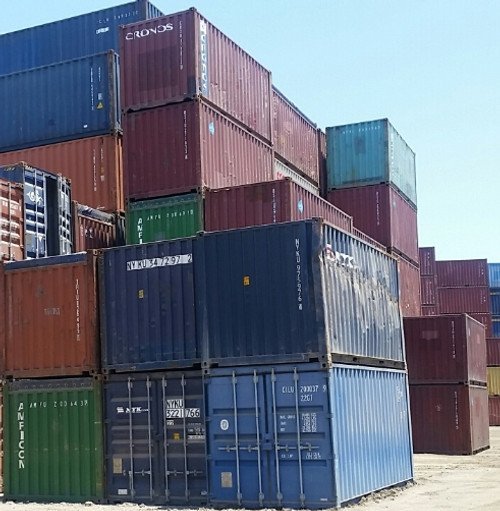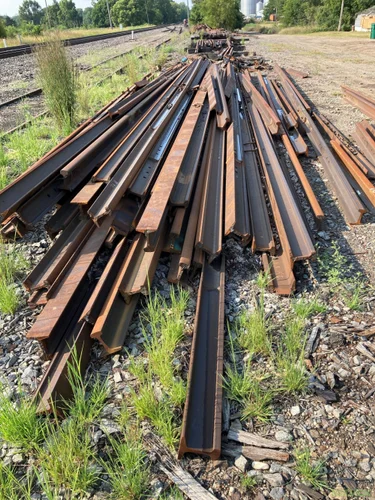Railway Scrap
Railway scrap refers to the leftover materials and components from decommissioned or retired railway systems. This can include various metal materials such as tracks, trains, signaling equipment, and other railway infrastructure components that are no longer in use. The recycling and repurposing of railway scrap play a crucial role in the sustainability of the railway industry, reducing waste and promoting resource recovery.
Key Features:
- Types of Materials:
- Rail Tracks: Steel rails that have been replaced due to wear, damage, or upgrades.
- Railway Ties (Sleepers): Wooden or concrete supports for rail tracks that are damaged or rotting.
- Rolling Stock: Decommissioned trains, locomotives, and railcars that have reached the end of their operational life.
- Signaling and Communication Equipment: Obsolete signaling systems, wires, and electrical components.
- Other Infrastructure: Bridges, platforms, and stations that are being demolished or renovated.
- Material Composition:
- Railway scrap primarily consists of high-quality steel, which is highly recyclable. Steel rails and rolling stock can be melted down and repurposed for new steel products.
- Other materials such as aluminum (from train components) and copper (from wiring) may also be present and can be recycled separately.
- Recycling Process:
- The recycling of railway scrap typically involves several steps, including collection, sorting, dismantling, and processing.
- Dismantling involves removing valuable components and materials for resale or recycling, often done by specialized companies.
- Once sorted, metals are processed and sent to steel mills or recycling facilities to be melted down and remanufactured into new products.
- Environmental Impact:
- Recycling railway scrap significantly reduces the environmental footprint associated with mining and manufacturing new metals.
- It conserves energy, as recycling metal typically uses 75% less energy than producing new steel from raw materials.
- It reduces landfill waste and helps mitigate the environmental impact of decommissioned railway materials.
- Economic Benefits:
- The railway scrap industry contributes to the economy by providing jobs in scrap collection, processing, and recycling.
- Companies involved in recycling can profit from selling processed scrap materials to manufacturers, while railway companies can offset costs by selling decommissioned assets.
- Recycling initiatives can lead to reduced disposal costs for railway companies.
Benefits:
- Cost Efficiency:
- Recycling railway scrap can be more cost-effective than producing new materials, as it reduces raw material costs for manufacturers.
- Railway companies can generate revenue by selling their scrap materials, providing an additional income stream.
- Sustainability:
- The recycling of railway scrap contributes to the circular economy, promoting resource conservation and minimizing waste.
- It supports sustainable development by reducing reliance on virgin materials and decreasing greenhouse gas emissions associated with production.
- Job Creation:
- The railway scrap industry creates jobs in various sectors, including collection, processing, transportation, and manufacturing.
- As demand for recycled materials grows, more employment opportunities can emerge in recycling facilities and related industries.
- Innovative Uses:
- Recycled railway scrap can be repurposed into various products, such as construction materials, automotive parts, and consumer goods.
- Some companies create art or functional designs from railway scrap, showcasing the potential for creative reuse.
Considerations:
- Safety and Handling:
- Railway scrap may contain hazardous materials (such as asbestos in older railway ties) that require careful handling and disposal.
- Safety protocols must be followed during the dismantling and processing of railway scrap to protect workers and the environment.
- Market Fluctuations:
- The price of recycled metals can fluctuate based on global demand, impacting the profitability of recycling operations.
- Rail operators should be aware of market trends and potential fluctuations when deciding to sell their scrap materials.
- Logistics and Transportation:
- Efficient logistics and transportation are critical for the successful collection and processing of railway scrap.
- Companies may need to invest in transportation solutions to move scrap materials to recycling facilities.
- Regulatory Compliance:
- Companies involved in the recycling of railway scrap must comply with local regulations regarding waste disposal, environmental protection, and occupational health and safety.
- Proper documentation and reporting may be required to ensure compliance with regulatory standards.
In summary, railway scrap represents a valuable resource that can be recycled and repurposed for various applications. The recycling of railway materials contributes to environmental sustainability, economic growth, and resource conservation. As the demand for recycled materials continues to rise, the railway scrap industry will play an increasingly important role in promoting a circular economy and supporting sustainable practices.











